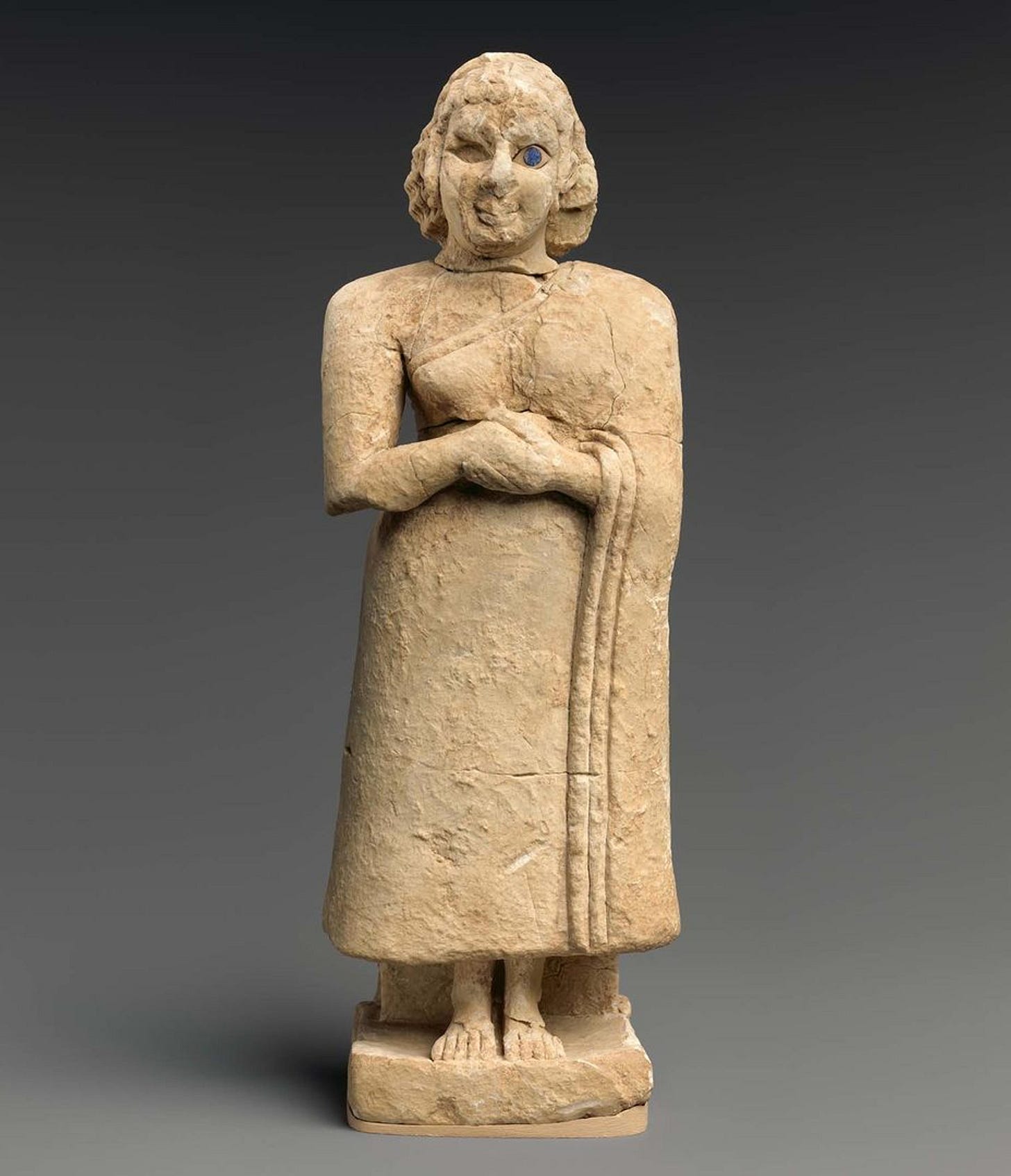Can YOU Uncover the Origins of Patriarchy?
Clues from Museum Exhibitions on Ancient Greece, Iraq, and India!
While many regions have made massive strides towards gender equality, others remain sternly patriarchal. In societies where male honour depends on female seclusion, girls face severe restrictions - prohibited from mixing and mingling, punished for talking to boys, and thus making it harder to find a husband who actually cares about your wants and welfare. Across the Middle East, North Africa, and South Asia, men continue to dominate state power, prestige and ideological persuasion - entrenching their own supremacy. While some women do venture out, they risk severe backlash.
What caused such entrenched inequality? Some scholars insist that hunter-gatherers were superbly egalitarian, with hierarchies only emerging alongside plough agriculture, private property, or the rise of states.
But here’s the fundamental problem: none of these studies recognise that persistent patriarchy stems from a cult of seclusion. If you don’t understand patriarchy’s causes in the 21st century, you can’t possibly identify its historical origins. To quote the great Lionel Richie, “You don’t know what you’re looking for”. Only by understanding the true cause can you unravel the thread and trace when it began.
Given the self-selection into reading this Substack, I suspect you rather enjoy trips to museums. Suppose you go to a historical exhibit this summer, what should you hunt for? My top-tip: focus on mortal women (not deities), look for signs that women were hidden, covered, or restricted - either in dress or architectural design.
By studying the cultural evolution of virtually every society, I theorise that cultural evolution has been heavily shaped by conquest. Groups with advanced military technology dominated others, gained state power, and their culture gained prestige, driving wider emulation. If new rulers idealised seclusion, then this culture gained status. So, if you leave any weaponry at the gates, let me take you through three museums and reveal these dynamics in action.
Caveat: we should be extremely cautious when cobbling together clues from antiquity. In an era of weak states and weak communication, there was tremendous cultural heterogeneity and idiosyncrasies. No single artefact can represent an entire society, these are just surviving fragments of an enormous jigsaw :-)



